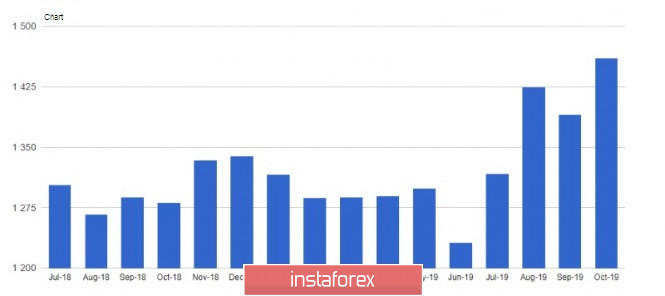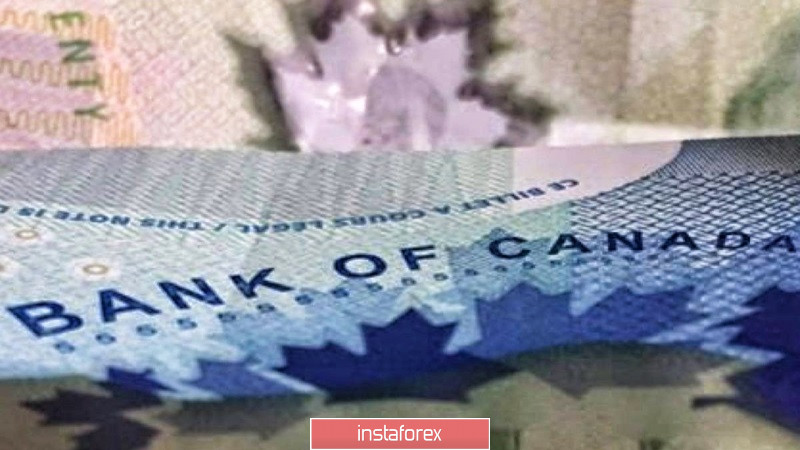The euro remained to trade in a narrow side channel against the US dollar, and the British pound fell after the speeches of the main candidates for the post of Prime Minister of Great Britain. Yesterday's statements by Donald Trump on the subject of a trade agreement with China were ignored by the markets, as they did not carry any valuable information.

Reports on the state of the US economy in the construction sector did not support the dollar. According to data from the US Department of Commerce in October this year, there was a slight increase in housing construction in the United States compared to September. Thus, the number of new home mortgages in October increased by 3.8% compared to the previous month and amounted to 1.314 million units per year. Economists had expected growth of 3.5%. The number of building permits also increased in October by 5.0% compared to the previous month and amounted to 1.461 million units per year. Economists had expected a fall of 0.5%. Compared to the same period in 2018, the number of bookmarks increased by 8.5%.

As noted above, yesterday, US President Donald Trump said that he was very pleased with the progress of trade negotiations with China, but did not disclose any details on the deal. There is also no information on when the first stage of the agreement will be signed. At the same time, Trump said he was ready to raise import duties if a trade agreement is not reached. Let me remind you that the parties refused to introduce new duties in December after the information that the first stage of the agreement could be signed soon.
The minutes of the recent Federal Reserve meeting will be published today, from which it will be possible to conclude whether the Central Bank plans to lower interest rates further or leave them at the same level. Last week, several committee members insisted that three reductions were enough and that even more policy easing was not required. However, the meeting between Trump and Powell earlier in the week sowed a shadow of doubt over the further prospect of rates, which could likely be further lowered this December. Such a scenario will put pressure on the US dollar and weaken its position against several world currencies.
During yesterday's speech, the head of the Federal Reserve Bank of New York, John Williams, noted that the intervention of the US Central Bank has brought good results. We are talking about the lack of liquidity, which was observed at the end of the summer of this year. Williams also noted that the US economy is in very good condition and the Fed is extremely close to achieving the sustainable inflation target of 2.0%. Past rate cuts have been solely aimed at countering negative factors that have hurt the economy's prospects. We are talking about a slowdown in the world economy and geopolitical uncertainty.
Returning to the reports, it is necessary to mention the data from The Retail Economist and Goldman Sachs, which indicated that the sales index in US retail chains for the week from November 10 to 16 increased by 0.5%, and compared to the same period in 2018 increased by 2.8%. A report from Redbook showed that retail sales for the same period rose by 4.1% year-on-year, but declined by 0.3% in the first 2 weeks of November.
As for the technical picture of the EURUSD pair, it remained unchanged. Problems with the resistance of 1.1090 remains. The bullish scenario will continue to be implemented only after it is possible to overcome this maximum, which will continue the upward correction to the area of highs of 1.1110 and 1.1140. However, we should not exclude the possibility of a downward correction, as the breakdown of the intermediate support of 1.1050 may push the pair to the lower border of the upward channel in the area of 1.1020.
USDCAD

The Canadian dollar fell against the US dollar after yesterday's statements that the interest rate could be reduced if necessary. During his speech, the representative of the Bank of Canada Wilkins noted yesterday that the Canadian financial system is stable, but trade conflicts and financial risks are the main sources of economic uncertainty. On this score, the Bank of Canada still has room for maneuver with the key rate at 1.75%.
Weak data on supply cuts in Canada's manufacturing sector also put pressure on the Canadian dollar. According to the National Bureau of Statistics of Canada, in September, sales in the manufacturing sector fell by 0.2% compared to August and amounted to 57.40 billion Canadian dollars. Inventories in Canada's manufacturing sector fell by 0.8% during the reporting period.
As for the technical picture of the USDCAD pair, the breakdown of this month's high at 1.3265 leaves the market bullish, which may lead to further strengthening of the US dollar and a test of the resistance in the area of 1.3300 and 1.3345. The downward correction will be limited to the support at 1.3240 and 1.3190.





















